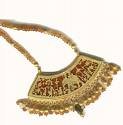Traditional yet Contemporary
The Indian culture has never been rigid and that's why it's surviving with pride in the  modern era. It timely imbibes the qualities of various other cultures and comes out as a contemporary and acceptable tradition. That is what unique about the Indian culture…it moves on with the time. There are certain things about India that are famous worldwide, like:
modern era. It timely imbibes the qualities of various other cultures and comes out as a contemporary and acceptable tradition. That is what unique about the Indian culture…it moves on with the time. There are certain things about India that are famous worldwide, like:
 modern era. It timely imbibes the qualities of various other cultures and comes out as a contemporary and acceptable tradition. That is what unique about the Indian culture…it moves on with the time. There are certain things about India that are famous worldwide, like:
modern era. It timely imbibes the qualities of various other cultures and comes out as a contemporary and acceptable tradition. That is what unique about the Indian culture…it moves on with the time. There are certain things about India that are famous worldwide, like: Flower Garlands
Indian people are also famous for welcoming with flower garlands. In the Indian marriages the exchange of garlands between bride and groom is a ritual in itself. People also offer flower garlands to gods and goddesses during their prayers.
Indian Marriages
Time has changed but the lavishness has always been an integral and indispensable part of Indian marriages. In India, marriage is still taken as an institution where not two people but two families get united. So, it always calls for boisterous celebrations full of music and dance. Within India, every caste and community has its own way of performing the rituals of marriage. In Hindu marriages, while Punjabis perform the 'Roka' ceremony in weddings, Sindhis perform the 'Berana'. But most common of all is the ritual of Hast Milap ceremony popularly called Paanigrahan Sanskar
















